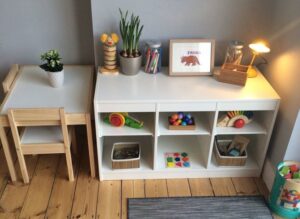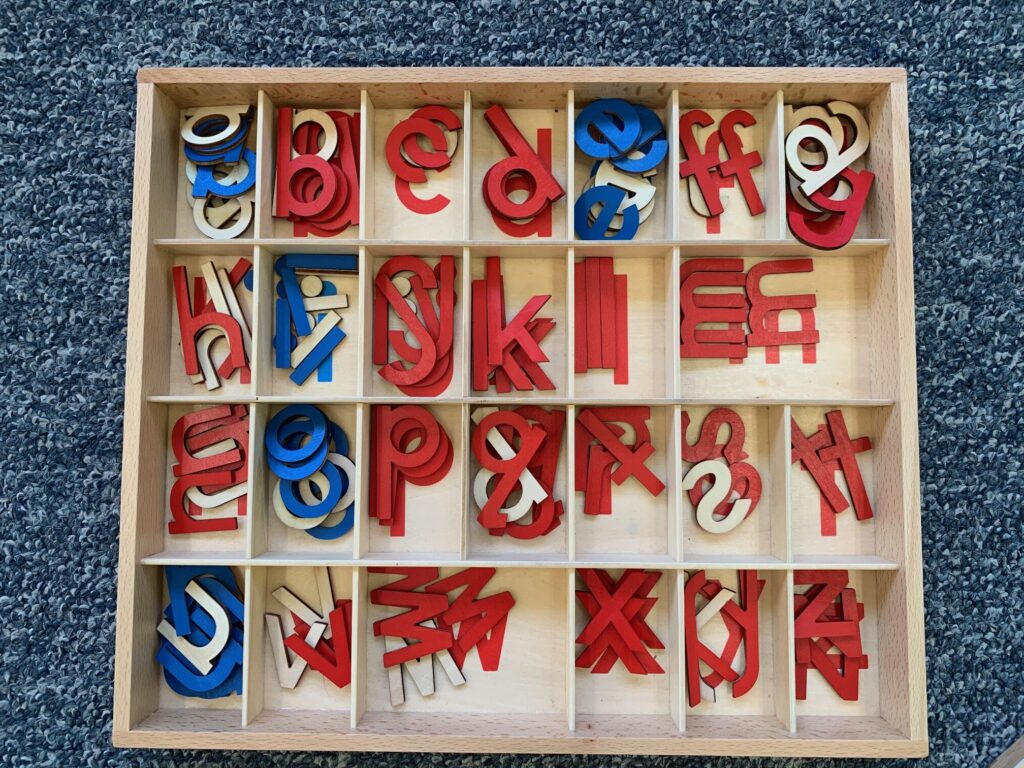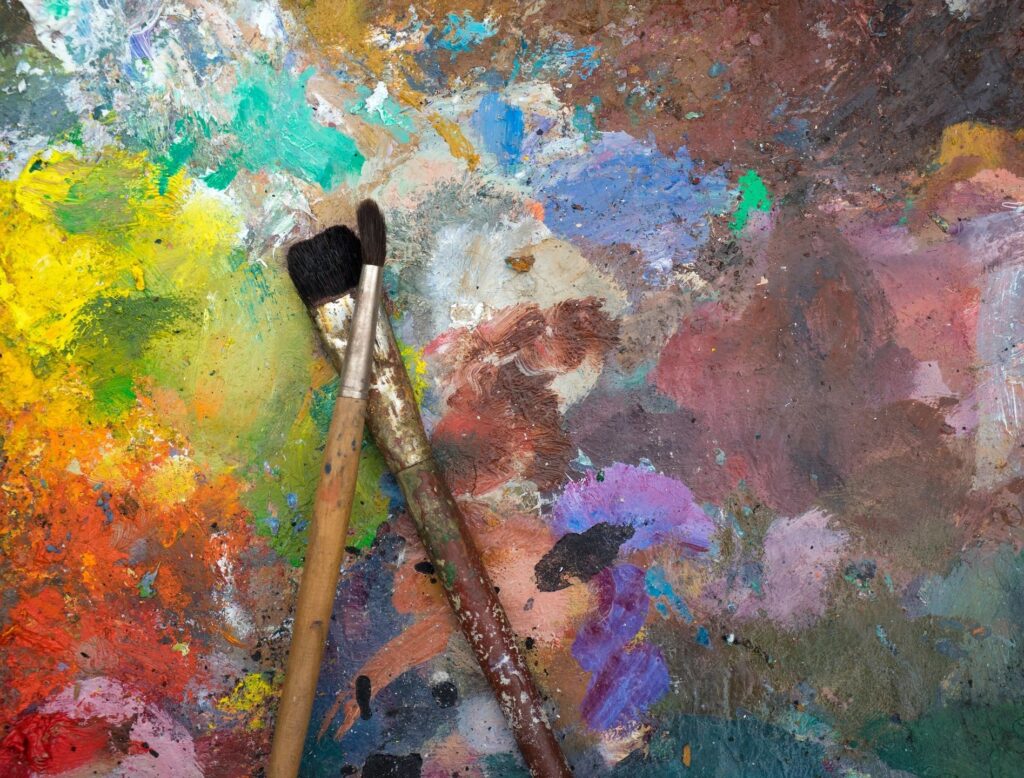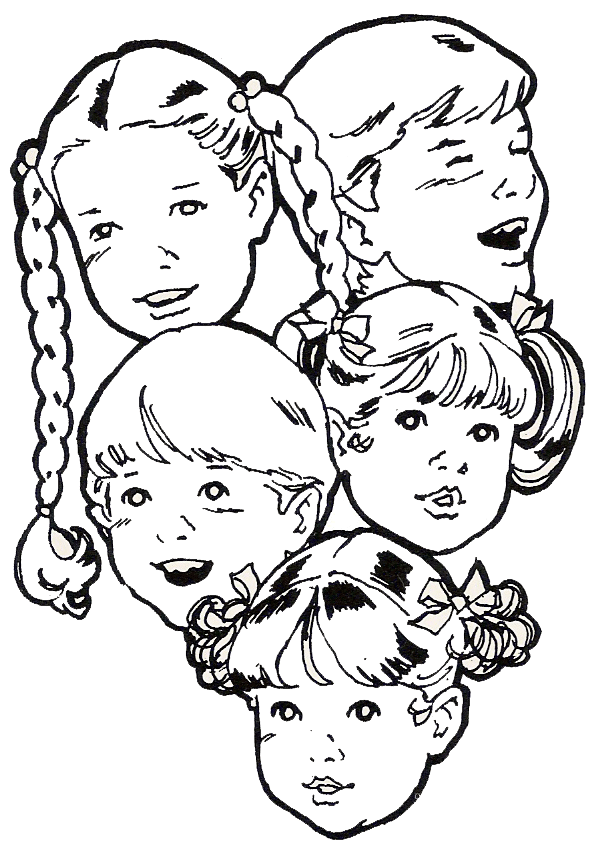
Montessori at Home
Here are some suggestions on how to incorporate Montessori in the home for our Children’s House/Kindergarten students. We also want to be clear that you DO NOT have to go out of your way and spend money to make your home look like your child’s classroom. If anything, our classroom are meant to resemble a home. Below is a sample of a daily routine and some activity suggestions for the Children’s House and Kindergarten level.
Who and What is Montessori?
Montessori education was created by Maria Montessori in the early 1900s, she was an Italian educator, physician and scientist. Through her work and observation, with poor to low-income families, she refined the use of experimental materials (blocks, puzzles, prepared meals and other hands-on learning tools), and later saw that the children had a sense of calmness and peace, deep concentration, sense of order for their environment and themselves. To this day people are still using her method in public and private schools around the world.
When families in the community come to observe our school, they’ll see that all of the environments are well put together. We set up the environment the day before or day of for the children. This allows the child to explore each day by using their senses and to cultivate a lifelong love of learning.
Each area in the environment has a purpose for different developmental functions. Functions such as sensory, eye and hand coordination, arts and crafts, Practical Life, food preparation (daily life skills) and language. Each child chooses an activity, they either take it to a work rug or a table and focus on their activity independently.
Creating Space for your Montessori Child at Home
Create a safe space with objects accessible to your child is ideal. The space you’re creating does not need to be a big space. It could be a little nook where you can add a low shelf and a quiet space for a basket of books. Some things to consider are:
- Low shelf – openly displayed activities, you can put 4-5 items that your child is interested in on the shelf (blocks, stringing beads, puzzle, art, opening and closing a variety of containers, etc.). You don’t want to over-stimulate them with activities. Your child can choose one activity at a time; when finished, they ca
 n put it back in the same spot they found their activity.
n put it back in the same spot they found their activity. - Small tables and chairs – These may be difficult to find. Don’t worry. Do your best to use something lightweight already in your home that your child can move on their own. You can use the chair and table space for art, snack, etc. Or if have an old coffee table or side table you can convert them into a work-space as well.
- Various sized trays or baskets (ones that your child can carry) – one activity goes into their own individual tray or basket. That one activity will be the focus point. In our environment, we introduce and show the child how to use the activity first and then invite the child to use the activity right after. When looking for trays and baskets, natural wood or wicker are great. They look more inviting and pretty on the shelf. Sometimes you can find them at your local thrift stores, dollar store, or online.
- Small utensils/child size utensils, jugs, tongs, etc. – These tools are used daily at home and o
 ur environment. You can find them mainly in our Practical Life area; jugs for pouring water, tongs for transferring one item from one plate to another, spoons and forks for eating, glass cups for drinking.
ur environment. You can find them mainly in our Practical Life area; jugs for pouring water, tongs for transferring one item from one plate to another, spoons and forks for eating, glass cups for drinking.
Please do not go out of your way to spend a lot of money on any of these items. You can find them in your home and thrift stores.
We hope you find this useful!
Best Wishes,
Capital Montessori School Staff
Daily Routine For Children’s House/Kindergarten
Montessori Activities For Children’s House/Kindergarten
Language:

Movable Alphabet Letters – In brief, a movable alphabet is a tool used in a Montessori learning environment to teach reading, spelling, and writing. It is a wooden box containing 26 wooden letters. Vowels are in blue and consonants are in red.
Initial Sound Matching – print and cut out the letters (sounds) and pictures. Have your child sit and sort the pictures to the sound. Start with just a few of the sounds at a time.
Math:
Rainbow Dice Game(color a rainbow) – Print the page, have the child roll a die and have them identify the number then color the portion of the rainbow with that number on it. Make it harder by adding dice and increasing the numbers. Even harder still use dice and have the child use addition or subtraction.
Science:
Homemade Slime Recipe – This is a great option for science and math! A great activity and fun to do outside. Be creative!
Art:

The human hand allows the mind to reveal itself. (Maria Montessori)
Cut an apple in half and use it as a stamp!

